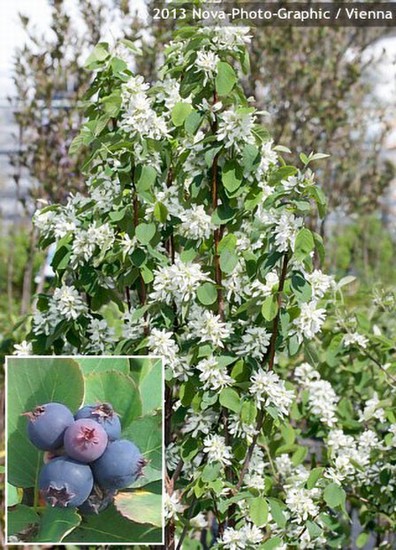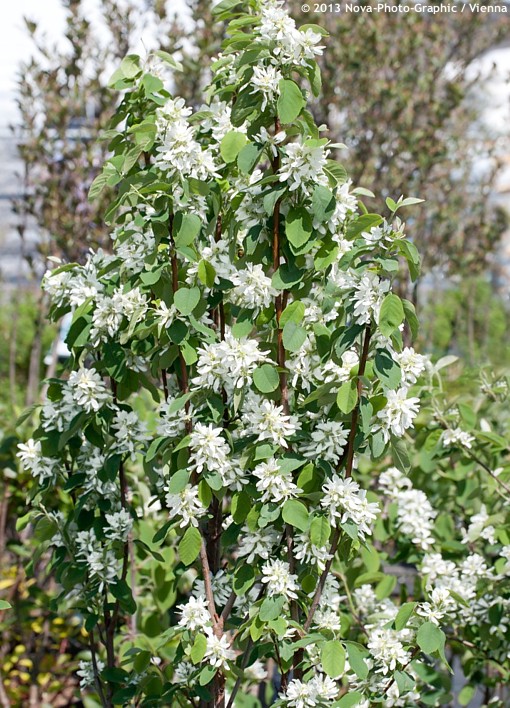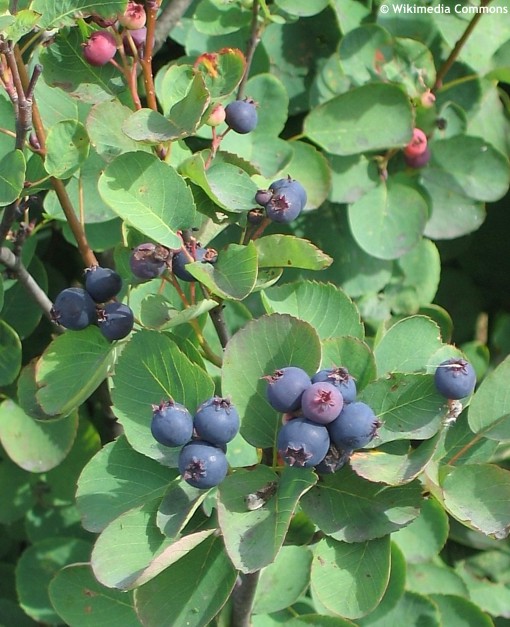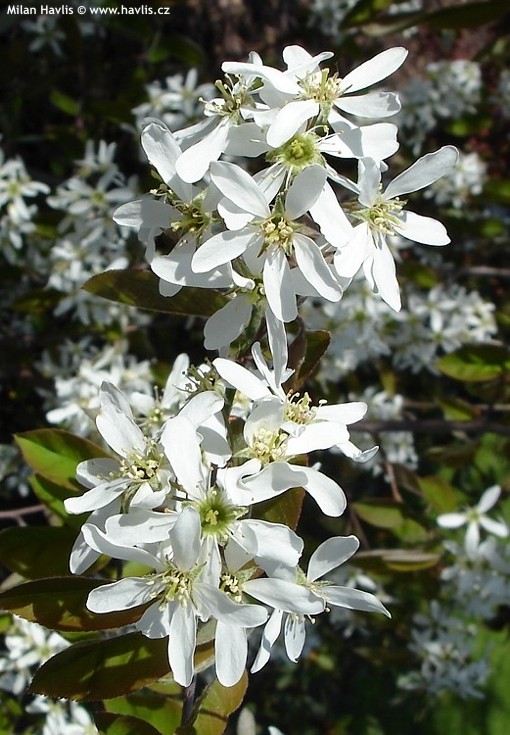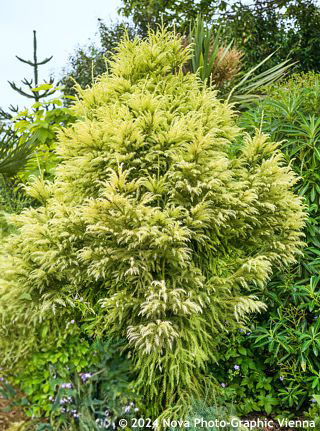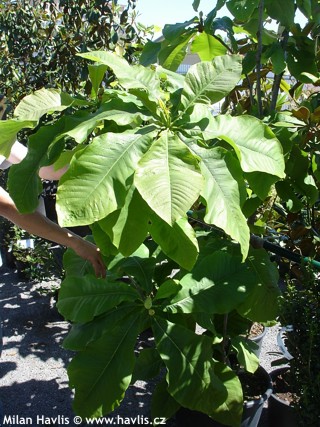Amelanchier alnifolia 'OBELISK' Saskatoon, Pacific juneberry
size/type
medium-sized shrub,medium-sized shrub
usual height
1-3m
usual width
1-1,5m
leaves
deciduous broadleaf
colour of leaves
flowers
showy
colour of flowers
blooming time
April-April
location
full sun
soil type
acidic (peaty)
soil moisture requirements
evenly moist (dislikes drought)
USDA zone (lowest)
1 (down to -46°C)
winter protection
for zone 5+6

for zone 7

categorized
I remember my first visit to Canada, absorbing the immense beauty of the Rocky Mountains and listening to my hosts’ tales of the country and its nature. In their living room they had a nice picture of a native plant from their home province called Saskatoon - they were born in Saskatchewan. It was no Monet or Van Gogh, just a simple coloured botanical drawing of that plant. That much they were proud of their home plant to give it a prestigious place above the fireplace.
Description of the plant:
Saskatoon is a native Canadian species of juneberry. It is cultivated for very tasty and juicy fruit which are deep purple to blue-purple berries similar to blueberries. They are formed in short clusters and best picked when fully ripe = when it turns the deepest colour. It can be used in any way you would use other berries, including wine. Unless eaten fresh they retain its vitamins by careful drying. They are borne from simple, pure white, star-shaped flowers that open in April. The harvesting period is quite long in a good year, from mid June until late July.Another useful part of this shrub are leaves. They are oval, deciduous, mid green, and are used for making tea, often along with dried berries. It is refreshing and healthy with an interesting, mild flavour. The leaves will turn golden yellow, orange, and even brilliant red if grown in acid soil. Obelisk is a variety that grows very compact and dense into an upright oval shape, no need for pruning or shaping. Still, should you need to cut it do so from late winter to early spring.
Saskatoon is somewhat soil adaptable but will grow best in fertile, acid, lime-free, moist but well-drained soil. It grows well in heavy clay. It is used for plenty of sun because Saskatchewan prairies can get more sunny days that any other Canadian province, so a sunny site is recommended for this variety, too. It is extremely hardy down to -60°C for which there is even no specific USDA zone code, that is why zone 1 (below -45°C) is used.
Last update 03-02-2013
WANT TO TRY A SIMILAR PLANT?












